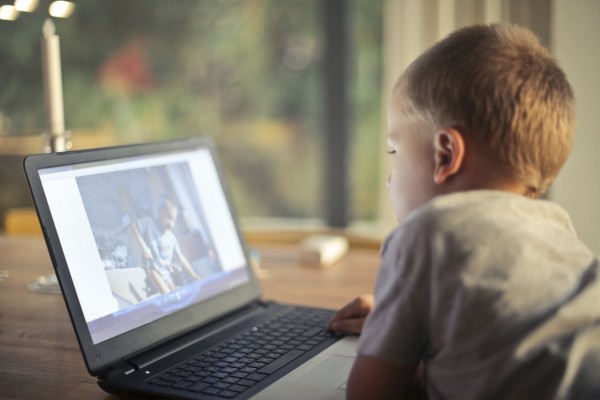
We’ve watched the world of social media transform from Myspace profiles and Facebook posts to Instagram TV. And as each of these platforms has evolved, they’ve attracted users from across the entire age spectrum — including children. In fact, most kids sign up for their first social media account before they even turn 13.
This isn’t necessarily a bad thing. Video-based online platforms, in particular, can be wonderful tools for learning and connecting — my daughter loves to create and share videos with me, and she uses FaceTime to bond with her out-of-town grandparents. But there are also risks involved in letting your kids consume content online.
Just last winter, YouTuber Logan Paul posted a video on his channel that exposed millions of young kids (his primary followers) to a disturbing subject matter. This begs the question: How do we protect our kids from seeing inappropriate videos, and what can be done when they do see negative content online?
Navigating the Gray Area
Studies show that children are more likely to exhibit aggressive behavior after they’ve been exposed to violent content. In today’s media-rich environment, however, it can be difficult to decide whether a video, photo, meme, or comment is inappropriate for young children.
Swear words, for example, are easy to label as “wrong.” But let’s say your kid likes to watch gameplay videos of Minecraft — he or she might see players using weapons to kill animals for food, which can be subjective and harder to identify as dangerous at the surface level. The answer isn’t always black or white, but what we do know is that it’s likely kids will stumble upon something you think is too mature for them.
I’m not saying you should pull the plug on technology altogether, but I do believe parents need to arm their kids with the tools to recognize and report inappropriate content and behavior. If you do learn that your child has been exposed to something disturbing, take these four steps to address it.
1. Remain calm.
If you find out that your kids have seen something inappropriate, try not to panic. Instead, encourage them to talk to you. It’s important to create an open, honest environment where kids can ask questions and gain clarity about what they’ve seen. If they do recognize that something is too mature and bring it to your attention, use positive reinforcement to show them that they made the right choice.
2. Avoid confiscating devices.
When your kids freely report inappropriate content, one of the worst things you can do is ban (or threaten to ban) the device on which it was viewed. This will only discourage your kids from coming to you in the future. Instead, gather information on what your children saw and assess the situation with them.
3. See it for yourself.
Rather than relying on your kids’ secondhand account of the video, ask them for a link and then review the content on your own. Afterward, you can have a transparent conversation about the material, explain why it’s not appropriate, and answer any questions they might have.
4. Search for alternatives.
If an app or website absolutely has to be avoided, work with your kids to find alternatives that are suitable for their age. This gives you a chance to educate your children on what makes an app a safe choice, and it encourages them to ask questions about it.
If you start talking to your kids proactively, it will encourage them to come to you if and when they see inappropriate online content in the future. And with that peace of mind, you can enjoy watching them soak up the many benefits that digital media has to offer.
Sean Herman is the founder of Kinzoo, a trusted and reliable source that helps parents safely navigate technology with their kids. Kinzoo is building a video-sharing and messaging app that will let kids experience the best of technology and protect them from the worst of it. Sean is a husband and father of two, an entrepreneur, and a business leader with extensive experience ranging from founder and CEO to project manager and corporate finance analyst.
This post comes from the TODAY Parenting Team community, where all members are welcome to post and discuss parenting solutions. Learn more and join us! Because we're all in this together.
